This past weekend, Bay Island Bonsai held its 14th annual exhibit at the Lake Merritt Garden Center in Oakland, California. For those of you who attended – thanks for coming! I hope you enjoyed the show. For those who couldn’t make it, I’ll share some of the highlights. We’ll start, today, with some scale junipers.
The Taiwan juniper below has been trained as bonsai for a long time. Its primary feature is its twisting double-trunk. Good movement and interesting deadwood are the most prized characteristics of juniper bonsai – this specimen has both.

Taiwan juniper
Far more complex is the Western juniper below. Its trunk tells the story of the harsh environment in which it grew – well worth a close look.
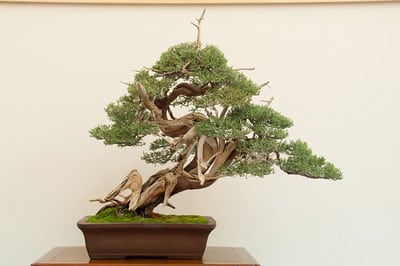
Western juniper
The Sierra juniper below is off to a great start. All of the branches are in place and in a few years the tree’s fullness will provide a great backdrop for its trunk and deadwood.
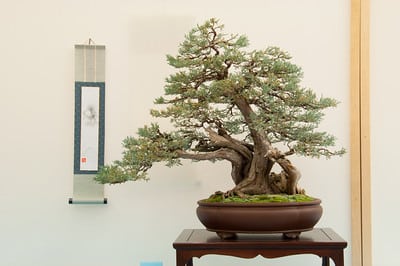
Sierra juniper
This next juniper tree is massive. I’ve watched, over the past 10 years or so, the transformation from Sierra to Shimpaku, and have been surprised at how quickly the tree has grown from a small number of initial grafts. Time will make the tree even more impressive.
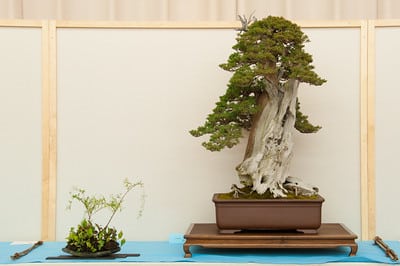
Shimpaku grafted on Sierra juniper
The shimpaku below is the product of over 90 grafts! The effort has not gone unnoticed – in 2008 the tree earned the National Bonsai Award at the first National Bonsai Exhibit in Rochester, New York.
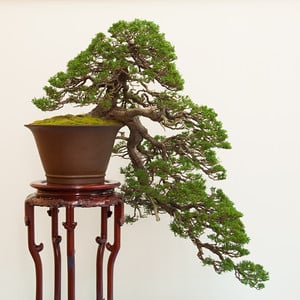
Shimpaku grafted on San Jose
Interesting deadwood and impressively dense foliage characterize the Sierra juniper below. The tree makes a good case for how well Sierra foliage can be developed.
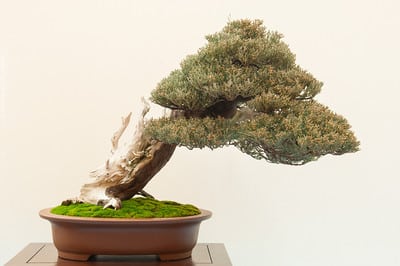
Sierra juniper
A medium-sized Sierra juniper bonsai – something sought after far more often than found.
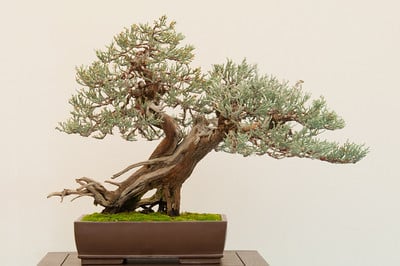
Sierra juniper
A small shimpaku fed by a slender lifeline – the foliage is perfectly healthy and full.
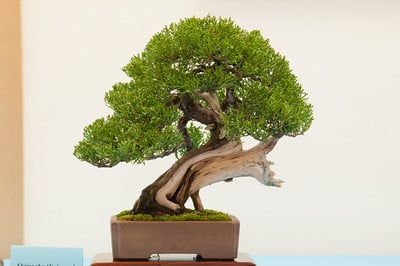
Shimpaku
Subscribe to Bonsai Tonight
New Posts Delivered Every Tuesday and Friday
Jose Luis says
Jonas,
The Taiwan juniper does not look happy. It does not have the vibrant green that’s common place with this species. On another note, this one, like 100% of Taiwanese junipers, are NOT collected and have been farm grown.
Regards,
Jose Luis
Zack Clayton says
Regarding the large trunk Shimpaku graft on Sierra Juniper. It looks good, but why the emphasis on the grafting? Was it a phoenix graft on a dead trunk, which I understand, or did the person just not like Sierra Juniper? I have not yet grown to fully appreciate this type of Frankentree where the species of a living tree is completely changed. I am left with the thought of nice construction. The same with the Shimpaku/San Jose. Its an impressively done construction project.
Jonas Dupuich says
Thanks for the comment Jose Luis – the tree is brown as it’s been left out in the cold this winter. Like with other shimpaku, cold temps turn the foliage brown and the bright green returns in spring – I’ll let you know if that’s not the case this year.
Zack – the big juniper was a live grafting project. Many famous junipers in japan have been grafted with foliage that’s more compact (itoigawa, kishu, etc.) to produce a more refined look. The same is true here only the contrast is great as even the color changes from grey-blue to green. Thinking of this as a construction project isn’t a bad way to look at the tree (grafted white and corkbark black pines come to mind too). Thanks for the comment!
Alex V says
I think foliage is just a personal preference. I have never liked any of the foliage from American junipers, and would graft shimpaku onto any juniper I own. In my opinion it is no different than changing the paint job on your car.
Thanks for the pics Jonas! I can’t wait to see the rest.
Jose Luis says
Jonas,
Thanks for the info. This does not happen in Taiwan.
In terms of grafting, it’s a wonderful tool to improove design options and quality. In the tropics, we do the same with collected premna, Hibiscus tiliaceus and podocarpus.
Regards,
Jose Luis